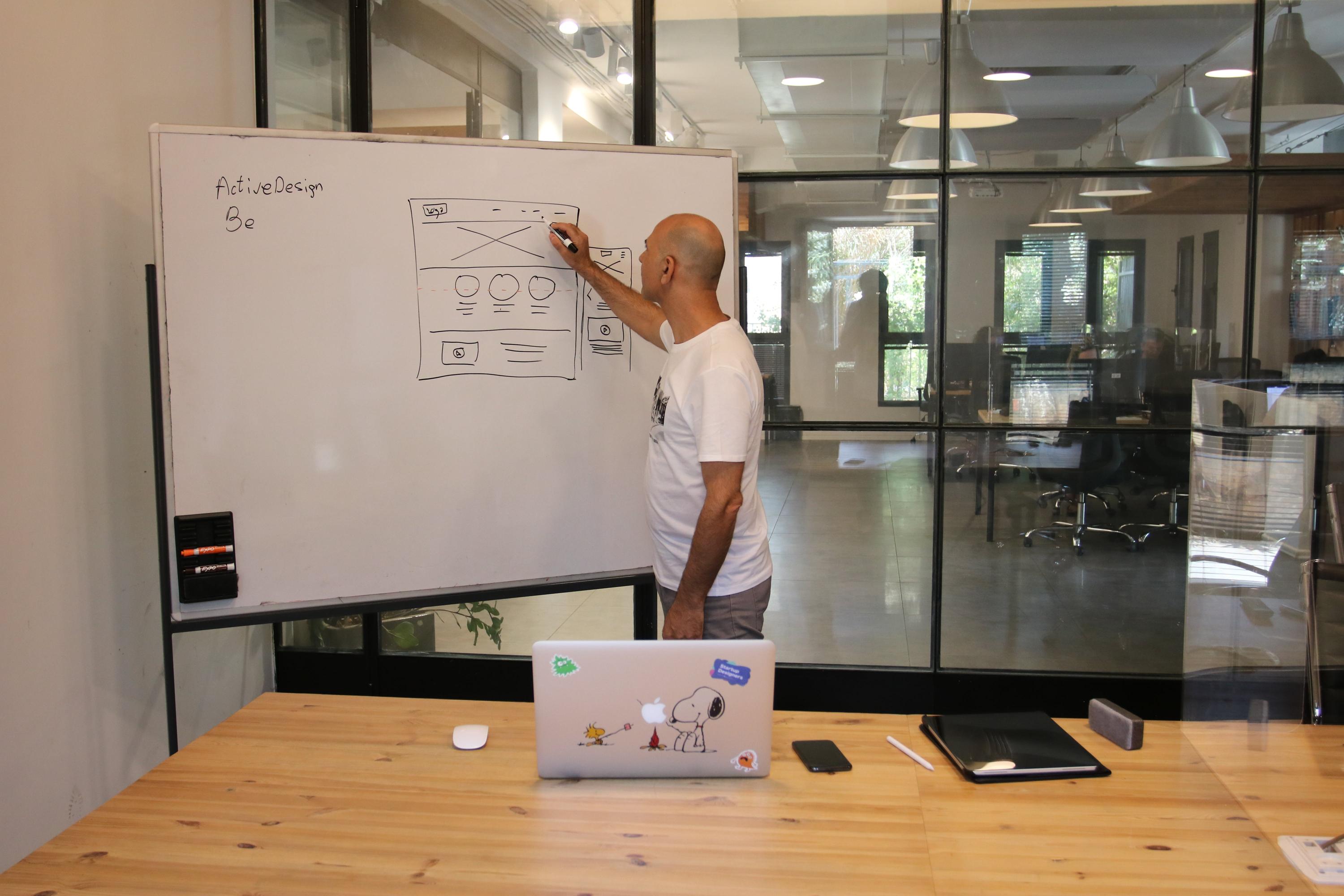Welcome to our latest blog post, where we delve into the critical components of user-centric design: understanding user personas and journey maps. In today’s competitive landscape, grasping these concepts is not just beneficial; it’s essential for crafting experiences that resonate with your audience.
User personas help us to comprehend the diverse needs and behaviors of our potential customers, while journey maps enable us to visualize their interactions with our products or services. Together, they form a blueprint for empathy-driven design that can elevate user satisfaction and drive business success. Join us as we explore how to harness the power of these tools to create more meaningful user experiences.
The fundamentals of user personas: crafting detailed profiles for target audiences

User personas are the bedrock of any user-centric strategy, providing a semi-fictional archetype through which businesses can channel their understanding of various segments of their target audience. Crafting these detailed profiles requires a blend of data-driven insight and creative narrative, leading to a deeper empathy with the people you’re trying to reach.
Picture this: instead of shooting marketing arrows into the darkness, armed with your user personas, you can turn on the floodlights at a stadium—targeting with precision and understanding. Now, consider the companion piece to personas – journey maps. They represent the narrative of your user’s experience, plotting out each touchpoint where they interact with your brand.
It’s like mapping out a treasure hunt, where X marks the spot of not just one, but every crucial moment of engagement. By integrating understanding user personas and journey maps, businesses can uncover hidden gems of customer insight, crafting experiences that feel tailor-made and effortlessly intuitive.
For instance, let’s say you’re in the fitness app business. Your user persona might be 'Fitness Fiona,’ a thirty-something professional looking for quick and effective home workouts. Through journey mapping, you uncover that Fiona typically explores new workout trends on social media; your tailored content on these platforms can therefore lead her to your app.
Moreover, recognizing that Fiona struggles to stay motivated, your app might include social features to connect her with a supportive community. By digging into the day-to-day of a persona, you empathetically align your strategies with the real-world journeys your customers navigate.
User personas and journey maps, when used in harmony, provide invaluable compasses that guide businesses to the heart of customer experience excellence.
Journey mapping 101: visualizing the user experience from start to finish

**Journey Mapping 101: Visualizing the User Experience from Start to Finish**In the dynamic world of UX design, one of the most potent tools at a creator’s disposal is the journey map. This is far more than a cartographer’s guide to the mystic land of User Experience; it’s a narrative storyboard that allows teams to step into their users’ shoes, to see the world through their screens, and to scrutinize every click, swipe, and sigh.
Understanding user personas and journey maps is akin to crafting a bespoke traveler’s guide tailored to each distinctive voyager that interacts with your product or service – it’s detailed, it’s insightful, and it’s absolutely essential for a rounded travelogue of digital discovery. Journey maps are the compass rose and the astrolabe of the digital sea, enabling navigators (also known as UX designers) to chart the course from the user’s first glance to the last action. They start by understanding user personas – the archetypes that represent the amalgamation of behaviors, goals, motivations, and pain points of real users.
These personas are the main characters in the epic tales that journey maps unfold. For instance, let’s imagine you are crafting an e-commerce app. Here, you might have Olivia the Opportunistic Shopper, who wants the best deal and will jump ship at the last moment for a better offer; or perhaps Ethan the Careful Cart Filler, who analyzes every product detail before making a purchase.
Their journeys through the app will be as unique as their invented lives, and visualizing these paths is vital in creating a product that caters effectively to each type of user. And so, the journey map unfurls, a visualized plot of each persona’s footsteps through the digital forest of interactions, experiences, and emotions.
The scrolling saga of a user’s interaction details all the touchpoints – emails, landing pages, customer service calls – akin to the landmarks and crossroads of our path. These maps not only plot the topography but also capture the climate – the frustrations during a difficult checkout process or the elation of a seamless onboarding experience.
They act as a diagnostic tool to highlight areas where the user’s journey may become treacherous, allowing designers and product teams to smooth out paths and plant signposts leading to the treasure – a satisfying user experience. Understanding user personas and journey maps is not just a part of the designer’s toolkit, it is the very essence of crafting experiences that resonate on a personal level with users. It’s about piecing together a tapestry so detailed and vivid that those who follow the map can not only find their way but also appreciate the beauty of the path they’re on.
Integrating user personas and journey maps: a strategy for enhanced ux design

Integrating User Personas and Journey Maps: A Strategy for Enhanced UX DesignCrafting an exceptional user experience (UX) is akin to hosting a grand soiree—success hinges on detailed knowledge of the guests, including their preferences and the paths they traverse. Enter the dynamic duo of UX design: user personas and journey maps. These robust tools are essential in designing products with a user-centric approach that adds value and spurs engagement.
Let’s delve into the art of understanding and interweaving these concepts to create a seamless user experience. User personas act as the foundation of our design narrative.
They encapsulate the quintessential attributes of our ideal users — their goals, pain points, behaviors, and motivational factors. Picture them as the protagonists in our UX story, each with a unique backdrop and discerning tastes.
For instance, imagine 'Jane’, a tech-savvy urbanite seeking an intuitive app for her daily commute, as opposed to 'Bob’, a retiree who favors simplicity and clear instructions for online banking services. It’s through these detailed vignettes that designers can tailor features and interfaces that resonate on a personal level, ensuring the product feels custom-designed for each user archetype. Once we’ve crafted our cast of personas, we chart their course via journey maps.
These visual narratives detail every interaction point a user has with a product or service, from initial discovery to loyal usage. Journey maps lay bare the moments of triumph and tribulation along the user’s path, offering invaluable insights into areas ripe for enhancement. For example, when Jane encounters difficulty in updating her payment information within the app, the journey map highlights this friction point, prompting designers to streamline the process in the next iteration.
Similarly, Bob’s hesitance at a convoluted password reset can lead to a reimagined, more reassuring flow facilitating trust and continuation of service. By mapping these experiences, designers weave the functionality and aesthetic of a product into a cohesive, user-approved tapestry.
In practice, the synergy between user personas and journey maps equips designers with a compass and a map—guiding the voyage through design decisions while marking the terrain of user interaction. This strategic integration is the compass rose of UX design, orienting every feature and interface towards the true north of user satisfaction. Whether it’s enhancing the checkout process for Jane’s seamless transition or simplifying navigation for Bob’s ease of use, this tandem ensures a bespoke experience that caters to the needs and expectations of all attendees at the grand soirée of UX.
Overcoming common challenges in developing user personas and journey maps
Understanding user personas and journey maps is akin to becoming an empath of digital product design – it allows you to step into your users’ shoes and navigate the mosaic of experiences that form the essence of user-centered development. Crafting these artifacts is not just about sketching out who your users are or what path they might take; it’s about distilling the complexities of human behavior into actionable insights that can drive design decisions to new heights of relevance and effectiveness. But as many design teams will attest, the journey to mastering this art is often strewn with a plethora of challenges.
One common speed bump on this road is the creation of overly generic user personas. It’s easy to fall into the trap of building a persona that is more of a broad demographic sweep than the nuanced character it should be.
A persona named 'Techie Tom’, characterized merely by his age range, job title, and a vague interest in technology, does little to inform a tailored design strategy. The secret ingredient missing here is depth – Tom needs a backstory, goals, frustrations, and specific behavioral traits that make him resonate with real-life users.
Imagine that Tom is not just a techie; he’s an early adopter who loves to beta-test new apps but has little patience for poor user interfaces. He’s not merely looking for functionality, he craves a seamless, intuitive experience across all his devices. Suddenly, you have a sharper lens through which to view your design decisions.
Another hurdle is the perilous journey of mapping out the user journey itself. Far too often, this map becomes an overly simplistic or linear representation of a process that, in reality, is anything but. Real users rarely take the direct path from point A to point B; they meander, take detours, double back, and occasionally leap off the path altogether.
A truly enlightening journey map acknowledges these wanderings and considers the array of touchpoints a user might encounter along the way. Take, for instance, a shopping app.
The journey doesn’t end at 'Add to Cart’; it extends to post-purchase support, returns, and perhaps even includes the step most fear to tread – the moment a user deletes the app. Addressing these less-than-ideal endpoints might just reveal opportunities for design improvements that turn one-time buyers into loyal patrons. By delving deeper into the creation of rich, detailed user personas and acknowledging the non-linear wanderlust of the user journey, design teams can uncover the pot of gold at the end of the user experience rainbow: a product that not only meets users where they are but also anticipates where they might want to go next. The development process can indeed be fraught with these cartographical challenges. Still, with a dash of empathy, a sprinkle of psychology, and a keen sense of observation, user personas and journey maps can transform from mere tools to beacons of user-centric enlightenment.
Leveraging user personas and journey maps for continuous improvement and innovation
**Leveraging User Personas and Journey Maps for Continuous Improvement and Innovation**Diving straight into the heart of user-centric design, understanding user personas, and journey maps has become an indispensable aspect of crafting products and services that not only meet but exceed customer expectations. Picture user personas as your product’s best friends with an elaborate backstory; they are fictional characters representing the different user types within your target demographic that could potentially interact with your company, product, or service in a significant way. By aiming to encapsulate the motivations, needs, preferences, and behavior patterns of your archetypical users, personas allow businesses to step into the shoes of their customers and see the world through their eyes.
Journey maps take the narrative one step further—think of them as the plotline detailing the full story of the user’s experience. A journey map charts out all the touchpoints a persona encounters while engaging with a product or service.
It’s a visual roadmap which narrates the tale of the user’s passage from initial awareness all the way through to the aftersales relationship. Imagine a board game that traces the highs and lows of the customer’s interactions, from the exciting roll of the dice to the frustrating stumbles on unexpected hurdles.
These maps reveal pain points, moment of delight, and opportunities where businesses can intervene to elevate the user experience. By leveraging both user personas and journey maps, organizations ignite a cycle of continuous improvement and sweet innovation. When Spotify updates its algorithm to recommend songs that hit all the right notes, or when Amazon fine-tunes its purchase process to be swift and hassle-free, it is this union of persona insights and journey mapping that is at play.
It’s Sherlock Holmes meets Edison in the pursuit for the 'eureka!’ moments that redefine user experiences.
They become the trusty compass and the detailed map guiding companies through the treacherous terrain of customer satisfaction, brand loyalty, and market relevance. Implementing this dynamic duo not only facilitates a user-centered mindset but propels industries toward a state of relentless advancement.
Nasza rekomendacja video
Summation
In this article, we explored the critical role of user personas and journey maps in creating targeted and effective user experiences. User personas help businesses understand their diverse audience segments, while journey maps chart the user’s pathway through a product or service, highlighting pain points and opportunities for improvement.
Together, they form a foundational toolset for user-centered design and marketing strategies.
FAQ
What are user personas, and how do they contribute to the development of a user-centric product or service?
User personas are fictional characters created to represent the different user types within a targeted demographic, attitude, and behavior set that might use a product, site, or brand in a similar way. They are a tool used in user-centered design to help designers and stakeholders understand and empathize with the end-users’ needs, experiences, preferences, and goals. By focusing on user personas, teams can create more tailored and effective products or services that better meet the expectations and requirements of their intended audience.
How can businesses effectively create and utilize user personas to better understand their target audience?
Businesses can effectively create and utilize user personas by conducting thorough market research to gather data on their target audience, including demographics, behavior patterns, goals, and challenges. This information should then be synthesized into detailed personas that represent different segments of their audience. By regularly referring to these personas during product development, marketing campaigns, and customer service strategies, businesses can tailor their efforts to more precisely meet the needs and preferences of their customers, resulting in more effective engagement and improved customer satisfaction.
What is a customer journey map, and why is it a critical tool for improving user experience?
A customer journey map is a visual representation of the process a customer goes through to achieve a goal with a company’s product or service. It outlines each step from initial contact, through the process of engagement and into a long-term relationship. This tool is critical for improving user experience because it helps businesses understand and address customer needs and pain points at each stage, ensuring a smoother, more intuitive, and satisfying interaction with the company.
In what ways can journey mapping influence the design process and decision-making in product development?
Journey mapping can illuminate the user’s experience over time, highlighting pain points and opportunities for improvement, which in turn can inform and prioritize design decisions. By visualizing the user’s flow through the product, designers and developers gain empathy and a deeper understanding of user needs, leading to more user-centered and effective product development. Additionally, journey maps serve as a communication tool that aligns cross-functional teams on the user’s perspective, ensuring that decisions made during the design process are consistently focused on enhancing the user experience.
How can the integration of user personas with journey maps provide a more comprehensive view of the user experience?
The integration of user personas with journey maps combines the detailed characteristics, goals, and behaviors of different user archetypes (personas) with the visualization of their interactions and touchpoints over time (journey maps). This holistic approach allows designers and stakeholders to understand not only who the users are but also how they move through and experience the service or product, revealing pain points and opportunities for improvement in a more nuanced and empathetic way.
What are some common pitfalls to avoid when creating user personas and journey maps, and how can organizations ensure their accuracy and effectiveness?
Common pitfalls in creating user personas and journey maps include relying on assumptions instead of real data, creating too many personas which can dilute focus, and failing to update them regularly to reflect changes in user behavior. To ensure their accuracy and effectiveness, organizations should base personas and journey maps on qualitative and quantitative research, involve stakeholders from different departments for diverse perspectives, and periodically review and revise them to keep them aligned with the evolving needs and behaviors of their users.

